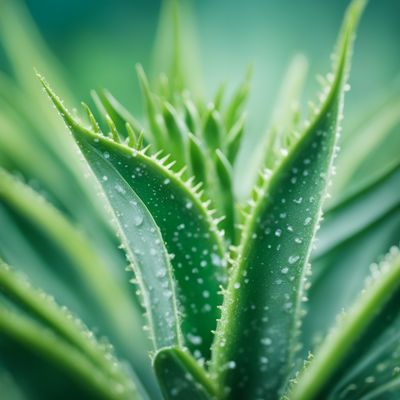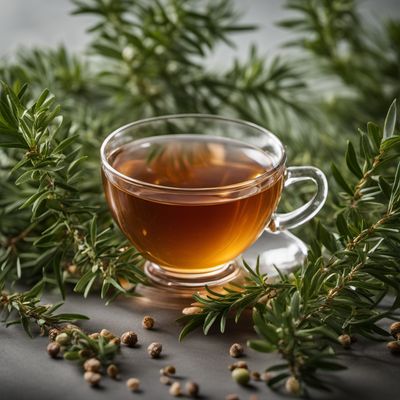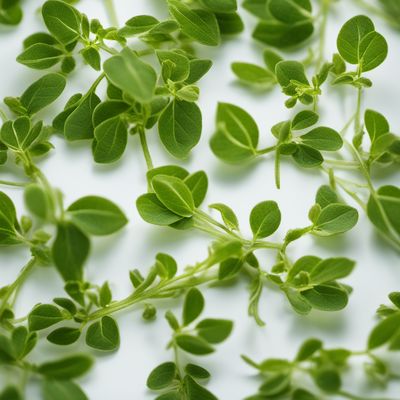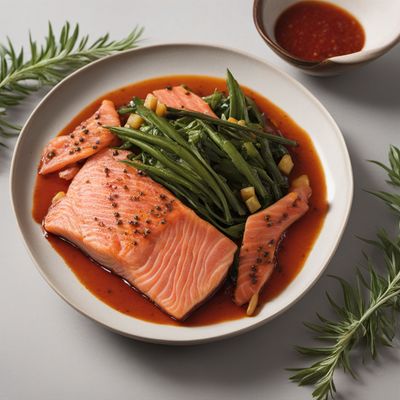
Ingredient
Silverweed infusion leaves
The Healing Power of Silverweed
Silverweed infusion leaves are characterized by their slender, serrated edges and vibrant green color. They offer a delicate and earthy flavor with subtle hints of grassiness. The leaves have a tender texture, making them ideal for infusions and teas. They can also be used as a garnish or incorporated into salads for added freshness.
Origins and history
Silverweed, also known as Potentilla anserina, has a rich history in traditional medicine and culinary practices. Native to Europe and Asia, it has been used for centuries to treat various ailments and promote overall well-being. The leaves were often brewed into infusions or teas to harness their healing properties. In culinary traditions, silverweed was used as a flavoring agent and garnish in dishes.
Nutritional information
Silverweed infusion leaves are a good source of vitamins A and C, as well as minerals like potassium and calcium. They are low in calories and rich in antioxidants, making them a nutritious addition to your diet.
Allergens
There are no known allergens associated with silverweed infusion leaves.
How to select
When selecting silverweed infusion leaves, look for fresh, vibrant green leaves without any signs of wilting or discoloration. Avoid leaves that appear yellow or brown, as they may be past their prime. Opt for organically grown leaves whenever possible to minimize exposure to pesticides and other chemicals.
Storage recommendations
To maintain the freshness and quality of silverweed infusion leaves, store them in a plastic bag or airtight container in the refrigerator. They can last for up to a week when properly stored. Avoid washing the leaves until you are ready to use them, as excess moisture can cause them to wilt.
How to produce
Silverweed infusion leaves can be easily grown in a garden or even in pots. They thrive in well-drained soil and prefer full sun or partial shade. Plant the seeds or seedlings in early spring and ensure they receive regular watering. Harvest the leaves when they are young and tender for the best flavor and quality.
Preparation tips
Silverweed infusion leaves can be used to make soothing teas or infusions by steeping them in hot water for a few minutes. They can also be added to salads, soups, or stews for a fresh and earthy flavor. Try using them as a garnish for a visually appealing touch. Experiment with incorporating silverweed infusion leaves into your favorite recipes to explore their unique taste and potential health benefits.
Culinary uses
Silverweed infusion leaves are commonly used in herbal teas, infusions, and as a garnish in various dishes. They are particularly popular in European and Asian cuisines, where they are valued for their delicate flavor and potential health benefits.
Availability
Silverweed infusion leaves are commonly available in Europe and Asia, where they are cultivated or foraged. They can also be found in specialty stores or online retailers that offer herbal ingredients.
More ingredients from this category » Browse all

Aloe leaf gel (pulp)
The Healing Gel of Nature

Tea tree infusion leaves
"The Healing Elixir: Unveiling the Power of Tea Tree Infusion Leaves"

Wormwoods infusion leaves
The Bitter Elixir

Yarrow infusion leaves
The Herbal Elixir: Yarrow Infusion Leaves

Moldavian dragonhead infusion leaves
The Aromatic Elixir: Moldavian Dragonhead Infusion Leaves

Fumitory infusion leaves
The Herbal Elixir: Unveiling Fumitory Infusion Leaves

Mullein infusion leaves
"Nature's Respiratory Remedy: Exploring the Benefits of Mullein Infusion Leaves"

Holy thistle infusion leaves
The Healing Power of Holy Thistle

Chiretta infusion leaves
The Bitter Elixir: Unveiling the Power of Chiretta Infusion Leaves

Wood betony infusion leaves
The Healing Power of Wood Betony

Knotgrass infusion leaves
The Herbal Elixir: Knotgrass Infusion Leaves

White deadnettle infusion leaves
The Soothing Elixir: White Deadnettle Infusion Leaves
